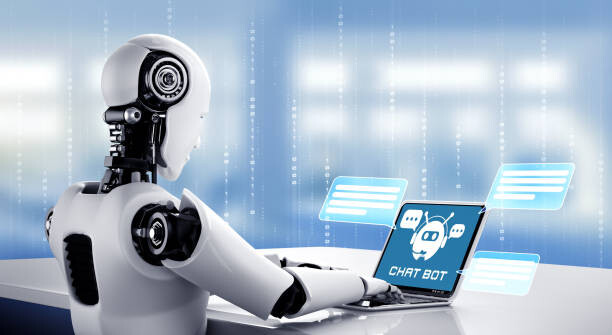Did You Know- More than 12 billion shipping documents are processed every year.!
A huge number of documents are exchanged between freight companies every year. There are all sorts of documents in a range of formats. Getting the data that you need from these documents has traditionally been costly & time-intensive. This manual process can be inaccurate sometimes when data needs to be updated in your TMS or ERP system. With Automated Document Processing software, logistical companies are learning how beneficial it can be to delegate their paperwork to AI machine systems.
What is Document Processing?
Document processing is the process of capturing and converting data from paper or digital documents into other formats for use by your company. This includes ensuring the data is ready for input into your business systems, like Cargo Wise.
As a freight forwarder, each shipment you take on needs something – Master Bills, House Bills, Supplier Invoices, Packing Lists etc.
The lengthy process of manually reading and labelling your invoices can be tiresome for logistics companies. It’s not just time-consuming, it also allows for more opportunities to make mistakes. Automated Document Processing software’s don’t miss a thing and provide an “error-free” process.
The manual process of document processing requires you to follow the following tiresome steps usually-
- Receive Documents
- Read and Understand Documents
- Open your data entry software
- Key in Data
- Check Data
Now as you can see it can be really tiring in the long run and can easily lead to multiple human errors making an enterprise completely dependable upon the human accuracy and perception.
Document Processing Can be Automated for Logistics
If you’re still digitizing documents manually, it’s time to get on the computer and start using Automated Document Processing software. It would allow you to do everything faster and more efficiently. Document automation software extracts the data from these documents, understands it and syncs it with your internal business systems, all at a cost of more than 80%, freeing up your team to focus on higher-value tasks.
What are the benefits of AI powered Automated Document Processingsoftware?
The benefits of AI powered document automation software are:
– Improved customer experience.
– Increased employee productivity.
– Reduced errors and improved accuracy.
– Reduced manual input and data entry time.
– Document formatting and layout automation.
Automated Document Processing software can make it easy to organize documents, to get them classified in the right way and to format them too. Machine learning algorithms help in determining the correct classification for a given document, and combining that with OCR makes the process easier. It’s worth investing time in if you’re going to publish a lot of text-heavy content.
Logistics companies spend a lot of time and manpower on importing documents into management systems; this can be put towards more profitable aspects of your company such as driving growth. Without AI document automations software, this would take a long time and be prone to human error.
How Does Automated Document Processing Work?
There are a lot of helpful pieces of software out there which can streamline and automate some of the most tedious and time-intensive work you have to do, such as creating sales letters or legal briefs. All the advanced software’s usually splits document creation down into four stages.
Document Classification:
In logistics, there are a lot of documents that need to be classified as certain types. Machine learning can take care of this by recognizing patterns on every document and classifying its type quickly. It’s ideal for other paperwork too like Bills of Lading, Commercial Invoices and Accounts Payable Invoices.
Data Extraction:
After uploading your document, AI performs an initial classification. If it’s an image-based doc, it use OCR to extract the data. This is also done with text-based documents as well so we can know the context better. This enables the previously unstructured data to be structured and mapped to our document schema, e.g. a Master Bill of Lading schema.
Data Exceptions:
If any extraction exceptions are caught, they’re handled through a logistic focused exception manager. This logs the reason documents couldn’t be sent into your TMS and tells you which ones. Users will be able to see & make changes in the document and the app will automatically update and sync it with a TMS. User feedback is also very important: they can share their opinions on how to improve or what could be improved to help us develop the automation technology together.
Data Release:
Once the paperwork has been scanned in, the data is transferred to your software system, updating job records with information from documents.
AI-powered content automation software also becomes smarter the more it is used. It learns from mistakes and improves over time. When using AI tools, shippers can customize it to meet their specific needs and interests and in doing so they play a crucial role in the product that provides valuable insight into company processes.
Summarizing the AI OCR Process looks somewhat like this:
- AI tool Imports Unstructured Data such as Email; API; Scan; Photo
- AI Captures Data, reads fields & structures data
- User Validates Data, Logistics Interface, BoL, AP Invoice, 14 Second Exceptions, AI Accuracy improves with users corrections over time
- Export Data to your preferred software like Cargo wise
Some people might disagree, but automation is way better than traditional OCR.
Traditional software may help resolve some manual data capture issues, but it also creates new challenges. For every new document, your operation team must set up a new set of rules and create a new template. It takes a lot of time and costs a lot of money to maintain traditional OCR. We know it’s not easy and we can help. AI-powered Automated Document Processing software saves time and money by eliminating the need for costly rules and templates. It also improves accuracy as it learns more, because of specialist machine learning models that continue to learn as they’re used.
The Benefits of Automated Document Processing Software for Shippers:
Document automation software is a great option for logistics teams who want to streamline their processes and save time/effort. Some of the benefits they offer include:
- Reduced data entry costs
Automation can cut data entry costs by up to 80%, which is a huge savings. That translates to a reduction from $3.33 per document down to just $0.60
- Quicker turnaround times
With our AI data capture solution that takes care of data entry – it can save you time and help you focus on other aspects of your business.
- Better utilization of staff time
The time automation is saving all of us, makes it possible for staff to work on more customer-facing activities.
- Improved data accuracy
When you need to automate the formatting and layout of your documents, this Automated Document Processing can make your life easier by handling millions of logistical documents. This could reduce data inaccuracies & human error and save you money.
ERP vs CRM: Key Differences, Strengths, and How Clavis’ ERP Drives Organizational Success
In the digital age, businesses strive to leverage advanced tools to streamline operations, boost productivity, and foster better customer relationships. Two pivotal software solutions that play a significant role in achieving these goals are Enterprise Resource Planning (ERP) and Customer Relationship Management (CRM) systems. While these tools may seem similar at first glance, they serve distinct purposes and offer unique benefits, and it is important to understand why you may need one or the other—or both in tandem.
1. What is ERP?
ERP stands for Enterprise Resource Planning, a comprehensive software suite that manages and integrates core business processes. These processes often include:
- Finance and accounting
- Human resources
- Supply chain management
- Inventory and order management
- Manufacturing
ERP systems centralise business data, allowing various departments to collaborate seamlessly and make informed decisions based on real-time insights.
Core Features of ERP Systems
- Centralized Data Management: Consolidates information from all business departments into one platform.
- Process Automation: Automates repetitive tasks to improve efficiency.
- Scalability: Can grow with your business, accommodating new functionalities as needed.
- Compliance Support: Helps organisations meet regulatory requirements.
- Advanced Analytics: Provides detailed insights to support strategic decision-making.
2. What is CRM?
CRM, or Customer Relationship Management, is software that focuses on managing a company's interactions with current and potential customers. The primary goal of a CRM system is to improve customer satisfaction, retention, and acquisition through personalised communication and efficient management of sales and marketing activities.
Core Features of CRM Systems
- Contact Management: Maintains detailed records of customer interactions and preferences.
- Sales Pipeline Tracking: Manages leads and monitors the sales process.
- Marketing Automation: Facilitates email campaigns, social media management, and more.
- Customer Support: Enhances post-sale services through ticketing systems and live chats.
- Data-Driven Insights: Helps identify trends to fine-tune marketing and sales strategies.
3. ERP vs. CRM: Key Differences
While ERP and CRM are essential for business success, they cater to different aspects of operations.
|
Feature |
ERP |
CRM |
|
Primary Focus |
Internal processes and operational efficiency |
Customer interactions and relationships |
|
Key Functions |
Accounting, supply chain, HR, inventory |
Sales, marketing, customer service |
|
Target Audience |
Internal stakeholders |
Sales, marketing, and customer support teams |
|
Data Integration |
Focuses on consolidating operational data |
Specialises in customer-centric data |
|
Scalability |
Enterprise-wide |
Primarily focused on customer management |
4. The Strengths of ERP Systems
ERP systems are the backbone of operational efficiency. Their key strengths include:
- Holistic Business View: ERP provides a comprehensive view of business operations by integrating data across departments.
- Cost Reduction: Automating processes reduces manual labour and errors, saving time and money.
- Improved Compliance: Centralized data simplifies regulatory reporting and ensures adherence to standards.
- Inventory Optimization: Enhances inventory management, reducing waste and ensuring timely procurement.
- Agile Decision-Making: Real-time data insights help leaders make swift, informed decisions.
5. The Strengths of CRM Systems
CRM systems shine in the realm of customer relationship management, with benefits such as:
- Enhanced Customer Insights: Tracks and analyses customer preferences to tailor interactions.
- Improved Customer Retention: Personalization and timely communication foster loyalty.
- Streamlined Sales Processes: Automates lead management, reducing manual intervention.
- Marketing Optimization: Helps segment audiences for targeted campaigns.
- Boosted Collaboration: Facilitates alignment between sales and marketing teams.
6. ERP and CRM: Complementary Tools
Though distinct, ERP and CRM systems are complementary and often integrated to deliver maximum value. For instance:
- CRM manages the front-end relationship with customers, while ERP handles back-end processes like inventory and order fulfilment.
- Together, they provide a seamless flow of information, ensuring that customer-facing teams have accurate, up-to-date data on orders and services.
7. Clavis' ERP: The Ultimate Solution for Organizational Success
Clavis' ERP stands out as a robust ERP solution designed to address the multifaceted needs of modern businesses. Here’s how it can drive your organisation's success:
a) Comprehensive Integration
Clavis' ERP integrates seamlessly with existing systems, including CRM platforms, to unify your business processes.
b) Real-Time Data Analytics
With Clavis' ERP, decision-makers can access advanced analytics tools that offer actionable insights into performance, trends, and potential opportunities.
c) Tailored Functionality
Highly customisable to suit the unique needs of businesses across industries, Clavis' ERP works for all—from manufacturing to retail and more.
d) Enhanced User Experience
The platform boasts an intuitive interface, making it easy for employees to adopt and use effectively.
e) Cloud Capabilities
Leverage cloud-based deployment for flexibility, scalability, and cost savings.
9. Choosing the Right Solution for Your Business
When deciding between ERP and CRM—or opting for an integrated approach—consider the following:
- Business Goals: Identify whether your primary focus is operational efficiency (ERP) or customer relationships (CRM).
- Scalability: Choose a solution that can grow with your business.
- Budget: Evaluate the total cost of ownership, including deployment and maintenance.
- Customization: Ensure the platform can be tailored to your specific needs.
Final Thoughts
ERP and CRM systems are indispensable for businesses aiming to optimise operations and enhance customer relationships. While they serve distinct purposes, their integration offers unparalleled value. With Clavis' ERP, you gain a robust tool that streamlines your operations and integrates seamlessly with CRM systems to provide a holistic business solution.
Some other posts you might be interested in.

Mauritius and MNIC 3.0 – Driving the Digital Transformation in East Africa
On February 26, 2024, the Prime Minister of Mauritius, Mr Pravind Kumar Jugnauth, unveiled MNIC 3.0, the latest iteration of the Mauritius National Identity card. Speaking on the occasion, the Prime Minister stated, “The new card reflects our commitment to modernity,...

CMS and DAM: Why your business needs both
With the enhancement of technology, consumers require flawless experiences in everything they do. Be it at home, with their smartphone, car, or work-space, the ease of handling tasks should be at the snap of a finger. To have a seamless experience at the workspace,...

15 Applications of Blockchain in Healthcare
"Blockchain" refers to a shared irreversible record of a chain of transactions, each of which is made up of one block, and which is held together by cryptographic keys ("hashes"). These keys or signatures are maintained in shared ledgers and connected by a network of...
